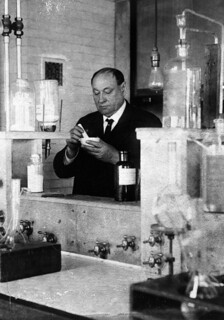The many flavors of wish-based patient recruitment.
[Hopefully-obvious disclosure: I work in the field of clinical trial enrollment.]
When I'm discussing and recommending patient recruitment strategies with prospective clients, there is only one serious competitor I'm working against. I do not tailor my presentations in reaction to what other Patient Recruitment Organizations are saying, because they're not usually the thing that causes me the most problems. In almost all cases, when we lose out on a new study opportunity, we have lost to one opponent:
 |
| Need patients? Just add water! |
Magical thinking comes in many forms, but in clinical trial enrollment it traditionally has two dominant flavors:
- We won’t have any problems with enrollment because we have made it a priority within our organization.
(This translates to: "we want it to happen, therefore it has to happen, therefore it will happen", but it doesn't sound quite as convincing that way, does it?) - We have selected sites that already have access to a large number of the patients we need.
(I hear this pretty much 100% of the time. Even from people who understand that every trial is different and that past site performance is simply not a great predictor of future performance.)
A new form of magical thinking burst onto the scene a few years ago: the belief that the Internet will enable us to target and engage exactly the right patients. Specifically, some teams (aided by the, shall we say, less-than-completely-totally-true claims of "expert" vendors) began to believe that the web’s great capacity to narrowly target specific people – through Google search advertising, online patient communities, and general social media activities – would prove more than enough to deliver large numbers of trial participants. And deliver them fast and cheap to boot. Sadly evidence has already started to emerge about the Internet’s failure to be a panacea for slow enrollment. As I and others have pointed out, online recruitment can certainly be cost effective, but cannot be relied on to generate a sizable response. As a sole source, it tends to underdeliver even for small trials.
I think we are now seeing the emergence of the newest flavor of magical thinking: Big Data. Take this quote from recent coverage of the JP Morgan Healthcare Conference:
For instance, Phase II, that ever-vexing rubber-road matchmaker for promising compounds that just might be worthless. Identifying the right patients for the right drug can make or break a Phase II trial, [John] Reynders said, and Big Data can come in handy as investigators distill mountains of imaging results, disease progression readings and genotypic traits to find their target participants.
The prospect of widespread genetic mapping coupled with the power of Big Data could fundamentally change how biotech does R&D, [Alexis] Borisy said. "Imagine having 1 million cancer patients profiled with data sets available and accessible," he said. "Think how that very large data set might work--imagine its impact on what development looks like. You just look at the database and immediately enroll a trial of ideal patients."Did you follow the logic of that last sentence? You immediately enroll ideal patients ... and all you had to do was look at a database! Problem solved!
Before you go rushing off to get your company some Big Data, please consider the fact that the overwhelming majority of Phase 2 trials do not have a neat, predefined set of genotypic traits they’re looking to enroll. In fact, narrowly-tailored phase 2 trials (such as recent registration trials of Xalkori and Zelboraf) actually enroll very quickly already, without the need for big databases. The reality for most drugs is exactly the opposite: they enter phase 2 actively looking for signals that will help identify subgroups that benefit from the treatment.
Also, it’s worth pointing out that having a million data points in a database does not mean that you have a million qualified, interested, and nearby patients just waiting to be enrolled in your trial. As recent work in medical record queries bears out, the yield from these databases promises to be low, and there are enormous logistic, regulatory, and personal challenges in identifying, engaging, and consenting the actual human beings represented by the data.
More, even fresher flavors of magical thinking are sure to emerge over time. Our urge to hope that our problems will just be washed away in a wave of cool new technology is just too powerful to resist.
However, when the trial is important, and the costs of delay are high, clinical teams need to set the wishful thinking aside and ask for a thoughtful plan based on hard evidence. Fortunately, that requires no magic bean purchase.
Magic Beans picture courtesy of Flikr user sleepyneko

